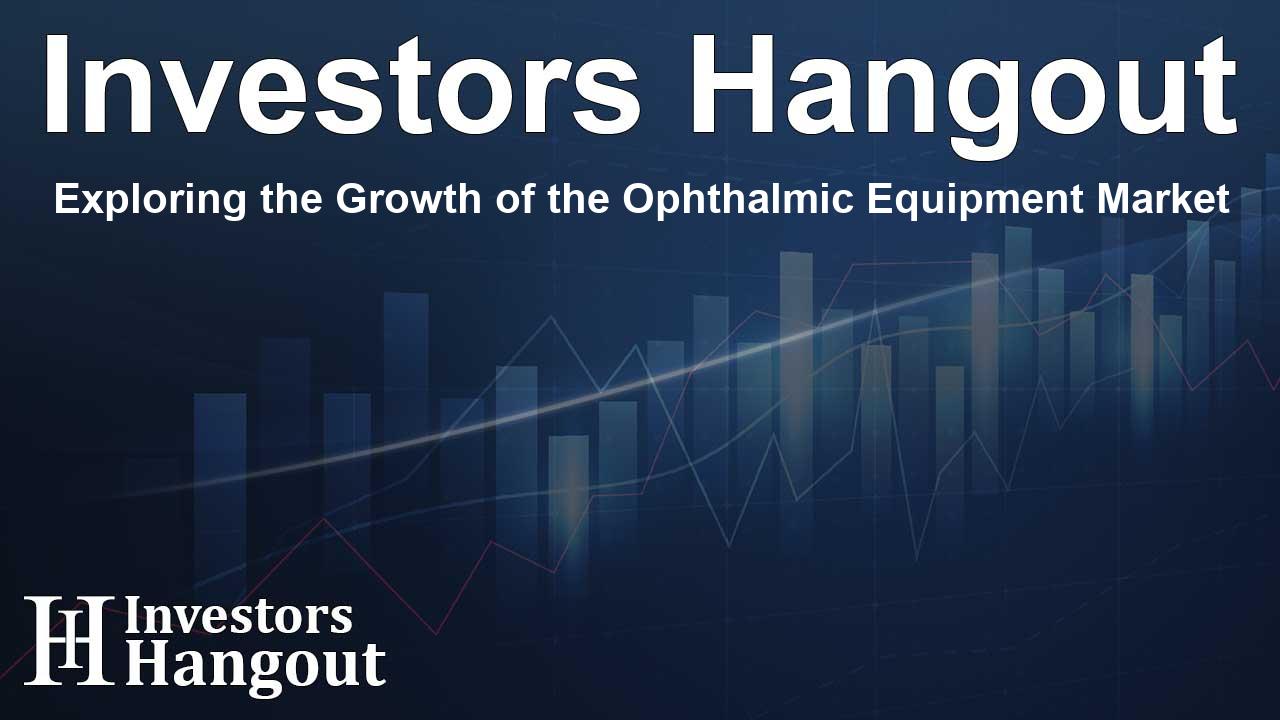Exploring the Growth of the Ophthalmic Equipment Market

Understanding the Scope of the Ophthalmic Equipment Market
The term "ophthalmic equipment" encompasses a variety of specialized medical instruments and devices utilized in ophthalmology, the medical specialty that focuses on diagnosing and treating eye conditions. Essential to eye care professionals such as opticians, optometrists, and ophthalmologists, these instruments facilitate a wide range of therapeutic, diagnostic, and surgical procedures vital for patient care.
The Role of Ophthalmic Equipment in Eye Health
Ophthalmic equipment plays a crucial role in the timely detection, evaluation, and treatment of various eye ailments. These specialized tools are integral not only for assessing vision but also for diagnosing and managing prevalent ocular diseases, including glaucoma and cataracts. Effective use of these instruments significantly contributes to maintaining ocular health and improving patients' visual well-being.
Patient Statistics and Market Demand
Globally, the impact of vision impairment is staggering; according to the World Health Organization (WHO), around 2.2 billion people experience some form of visual impairment. In the United States, age-related eye disorders, such as cataracts and glaucoma, are major contributors to this issue. The Centers for Disease Control and Prevention (CDC) highlights alarming statistics, stating that 1.8 million Americans under 40 are afflicted with age-related macular degeneration (AMD). With the growing prevalence of eye disorders, the demand for advanced treatment solutions is rapidly increasing.
Government Initiatives Promoting Eye Care
Approximately two billion individuals are affected by blindness or vision impairment worldwide. To counter this challenge, various governments and organizations are striving to enhance access to eye care services. Initiatives led by the World Health Organisation (WHO) are endorsing the integration of eye care services into national health strategies. A notable target set for 2030 is to provide effective care for people suffering from refractive errors and for those requiring cataract surgery.
Market Expansion Opportunities
The increased focus on eye health by both governmental authorities and NGOs is creating significant opportunities in the ophthalmic equipment market. The global fight against vision impairment is expected to expand the market as more resources are allocated toward enhancing eye care infrastructure and services. The current landscape indicates a growing need for sophisticated ophthalmic devices to meet the rising demand.
Regional Insights into Market Growth
North America currently holds the largest share of the ophthalmic equipment market and is anticipated to witness substantial growth in the coming years. The developed healthcare landscape, characterized by state-of-the-art facilities and a high acceptance rate for innovative medical products, is essential for market expansion. Furthermore, as the population ages, there is an increasing prevalence of cataract and glaucoma surgeries, further driving demand for ophthalmic devices.
Recent Developments in Ophthalmic Equipment
Significant innovations in the field are contributing to market growth. For example, Bausch + Lomb introduced the TotalVisc Viscoelastic System, which enhances the options available to eye surgeons during cataract procedures. The ability to utilize cutting-edge technology helps improve surgical outcomes, ultimately benefiting patient recovery and care.
Market Segmentation Overview
The global ophthalmic equipment market is segmented based on product type, application, and end-users. Products such as vision care devices, cataract surgical tools, and diagnostic equipment are gaining prominence. The cataract segment is notably the largest revenue contributor, reflecting the critical demand for treatments in this area.
Key Competitors in the Market
The following companies are recognized as key players in the global ophthalmic equipment market: Alcon, Carl Zeiss Meditec, Bausch & Lomb, Johnson & Johnson, and Haag-Streit, among others. These companies are continuously advancing their product lines to capture market share and meet evolving healthcare needs.
Frequently Asked Questions
What is the projected size of the ophthalmic equipment market?
The ophthalmic equipment market is projected to reach USD 105.20 billion by 2033, showcasing robust growth due to increasing eye care demands.
Which factors are driving market expansion?
Rising prevalence of eye disorders, government initiatives for eye health, and advancements in ophthalmic technology are key factors fostering market growth.
What regions have the largest market share for ophthalmic equipment?
North America currently holds the most significant share of the ophthalmic equipment market, with expectations for continued growth.
How is the competitive landscape in the ophthalmic equipment market?
The market features numerous established players including Alcon and Bausch & Lomb, who invest in innovation and product development to stay competitive.
What application areas dominate the ophthalmic equipment market?
Ocular conditions like cataracts and glaucoma are the primary application areas driving revenue in the ophthalmic equipment sector.
About Investors Hangout
Investors Hangout is a leading online stock forum for financial discussion and learning, offering a wide range of free tools and resources. It draws in traders of all levels, who exchange market knowledge, investigate trading tactics, and keep an eye on industry developments in real time. Featuring financial articles, stock message boards, quotes, charts, company profiles, and live news updates. Through cooperative learning and a wealth of informational resources, it helps users from novices creating their first portfolios to experts honing their techniques. Join Investors Hangout today: https://investorshangout.com/
Disclaimer: The content of this article is solely for general informational purposes only; it does not represent legal, financial, or investment advice. Investors Hangout does not offer financial advice; the author is not a licensed financial advisor. Consult a qualified advisor before making any financial or investment decisions based on this article. The author's interpretation of publicly available data shapes the opinions presented here; as a result, they should not be taken as advice to purchase, sell, or hold any securities mentioned or any other investments. The author does not guarantee the accuracy, completeness, or timeliness of any material, providing it "as is." Information and market conditions may change; past performance is not indicative of future outcomes. If any of the material offered here is inaccurate, please contact us for corrections.